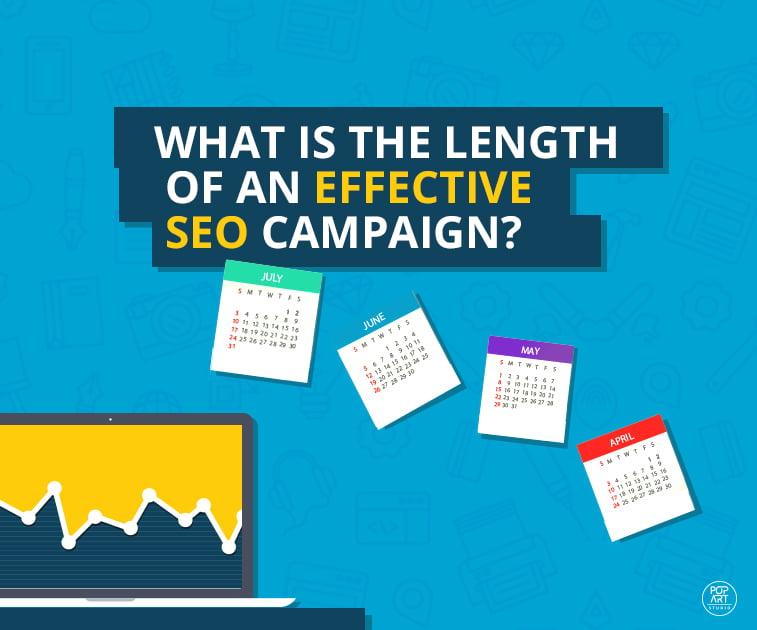If you are an SEO expert you have probably heard this question at least three to four times a day. After a while you get used to clients calling up and asking you the question: “how long does it take for SEO to take effect?“, and learn to answer it with a smile.
I feel pretty much the same emotions when someone asks me: “What does this word mean?” – which is when I answer them: “Well, can you tell me the context?“ The same practically applies to SEO – if you do not know the website, i.e. before you have done a complete analysis of its current condition – you cannot, and I repeat CANNOT know for how long the optimization is going to start ‘working’.
SEO is a process, it takes time for it to grow once you have planted the seed. Unless you have done it right from the beginning, you cannot expect it to develop normally. It is, therefore, very important that you do everything right and follow the methodology by stages in order to see the results of your SEO campaign.
SEO audit
Various kinds of sites will ask you to perform SEO on them:
- Newborn
- Regular site
- Old site with penalty
With brand new sites you know that Google will notice them in a couple of months, usually in two to three months, and if it sees there is quality content on them – it will stay there and index them regularly. This process can be speeded up a bit if you fetch a link towards it from an older site, which will make the process faster and have it indexed within a day or two (depending on its TrustRank, of course)!
With regular sites which have already seen the light of Google’s algorithms, the average time of getting positive results is going to take at least 2 to 4 months. This is just enough time to produce great new content and throw in a backlink campaign or two to make the traffic fluctuation steadier.
When it comes to old sites with a penalty from Google (which need not necessarily happen after an algorithm update) – they are going to demand a lot of work and a lot of time. The only thing you need to do before you give your estimate on the length of you SEO campaign is to see the site first – you need to know whether it is a small one-page site or a gigantic, mammoth site.
No matter its current condition, there are phases you need to pass if you want to do it right. Some will pass slowly whereas other will fly by really quickly. Nevertheless, this is how a properly done SEO campaign should be done.
Month #1: Research
Just like finding a new love, the first month will be all about discovery. However, unlike a love relationship, an SEO research will demand discovering what is currently rolling and making a plan for future. This plan will require working out phases that the site needs to go through gradually, without skipping any. For example, you probably know that in the world of SEO everything revolves around keywords – so this is the time when you are going to have to do your research and come up with a strategy for your project. Say you want to rank for at least five to ten keywords – you are going to have to do an analysis of the keywords and see how your competition is using them, what are their methods, and see if you can beat them.
This phase also requires making a plan for resolving technical issues (if any) and analyzing content on your website, which is done in months #2 and #3, as well as start opening social media profiles.
Month #2: Technical stuff
After the research is done right, the next phase is resolving technicalities. If you go according to the plan, you should first check the following things:
- Structure
- Performance
- Internal links
- Crawl errors
- Duplicate content
In order to let Google’s crawlers enter your site (and leave it satisfied), you need to make its structure crawlable – adding an XML sitemap would help them immensely, as well as optimizing images for easier indexing, and making sure everything is working properly. Site speed and responsive design are today one of the features that improve user experience and help your site go up the PageRank, so you had better boost them. Internal links and 301 redirects will allow spiders go through your site more often, and removing duplicate content will certainly make that penalty go down.
Month #3: Content (is king)
It was Bill Gates who said that Content Is King way back in 1996, and this is true for 20 years now. There are several pathways your content needs to take. First of all, content on your website needs to be top quality and updated regularly. This will probably demand hiring a professional to do it for you (because you probably do not have enough time to write by yourself).
Starting a blog which is integrated within the website would be the best choice to give signals to Google that you are working really hard on it. Also, guest blogging (which was recently ruled out as black hat by Google’s Matt Cutts) is not a bad idea, of course, if you do not misuse it and create spam links with zero quality. Infographics have been a real thing but now have lost on popularity, but video content is quite promising these days, so maybe you can think going this way.
Since people love free stuff, you can offer the visitors of your site freely downloadable things in digital format, such as eBooks, PDFs with content that is going to be useful to them. Another big thing is throwing occasional white papers which can make your site authoritative, as well as case studies that can help you prove you are an expert in your area.
Month #4: Expand outreach
In the fourth month you should continue with writing great content for the website. This month is also when you have to have your links all cleaned up, i.e. if the links you have connected your sites with were toxic, you need to remove them or disallow them.
This is also the time to go out there and expand your outreach via guest blogging. Guest posts can contain links, which the site can only benefit from if they are healthy and authoritative, but you should, of course, make a balance of “dofollow” and “nofollow” links, in order to make them look as natural as possible in the eyes of Google. However, since the tide in the guest blogging sphere often changes, make sure to keep up with the current and follow the rules which are currently on.
Month #5: Socialize
Social media today is the right way. Month five need not be the time when you should start opening social media accounts and profiles – you should have done this way before, say in month one or two. However, this is the time when you should start your social media campaign actively – you have enough content to display, and you can start building your brand. Just make sure that you have it updated on all profiles and accounts – make it uniform across all networks.
Keep in mind that you need to update and inform your fans and followers on a regular basis – at least once or twice a week – without skipping a month or, God Forbid, two. People are social beings and it is natural for them to have questions and problems – which you can solve directly via means of social media networks.
Month #X: Optimize, measure, and repeat
You should keep going with content creation, link building and sharing on social media in the future, but make sure to follow metrics and deal with analytics. Google Analytics are most widely used today because they allow you to keep everything in one place, whereas Moz (Open Site Explorer), Ahrefs, and Screaming Frog can only give you an overview of the situation your site is currently in. When you see that a certain technique you are using is making results, you can enhance it and make it better in the future, so your SEO process brings even better results.
Read more:
- Basic SEO for web designers: How to boost user satisfaction?
- How to organize SEO projects
- Leave Google alone: Possible causes of search traffic decline





